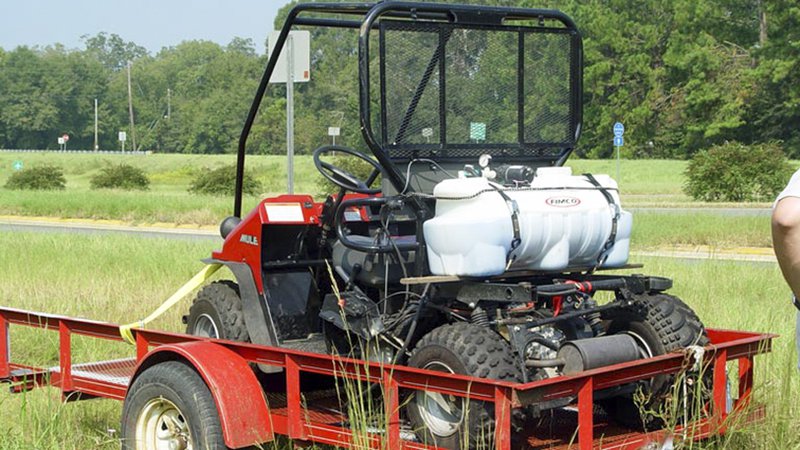Improve quail habitat with a wave of the magic wand
BY agfc
ON 09-27-2017

Sept. 27, 2017
It may not be magical, but a spraying wand and applicator is one of the best and least labor-intensive tools a landowner can use to improve their property for quail.
Ryan Diener, senior Farm Bill biologist with Quail Forever, one of the AGFC’s main partners in the restoration of northern bobwhite in Arkansas, says spraying non-native cool season grasses in the fall is one of the best practices a landowner can do to make their property more appealing to quail.
“Granted, spraying is usually a precursor to a more involved project, it can function quite well on its own,” Diener said. “Whether you have a solid stand of fescue, or cool season grasses and winter annual weeds (like garlic mustard) creeping into your favorite native grass and wildflower stand, a spraying application is a quick, easy, and cheap way to drastically improve that area for quail and other wildlife.”
Fall spraying should be done after your specific area gets a “killing frost” – four or more hours under 27 degrees. A killing frost will make all of our native plants go into winter dormancy. Most non-native plants will live through this event, and start drawing their nutrients down to their roots on warm days following that. This leaves them susceptible to chemical applications at a time when you will not be hurting any beneficial native plants that may be there or that you have already planted. Another advantage to this type of fall spraying is that it can be done cheaper than sprayings at other times of the year because you will not have to use a specialty selective herbicide. All of the plants we want to keep are dormant already, so non-selective herbicides, specifically glyphosate products, can be used at this time. Glyphosate products are usually some of the cheapest chemicals found on the market used in habitat management.
Areas sprayed in fall will have a flush of native annual forbs the following spring. The most common of which is usually ragweed, a favorite food and cover plant of quail. The diversity of plants in these areas will change and increase each year as early successional species fade away to more perennial species of forbs and native grasses. This whole process will happen on its own after a spraying, but it can be helped along.
“You can come in about a month after the spraying in areas that were solid fescue and conduct a prescribed burn to remove the dead litter covering the ground,”Diener said. “You could also disk the area to stimulate plant growth, but any soil disturbance may also cause some unwanted weedy species to grow as well.”
Future applications may be needed to keep fescue at bay, it is a very aggressive grass. These can be done again in the fall, but spring spraying can play a major role in this as well. Spring herbicide application comes with a whole different set of rules, chemicals and timing.
Landowners rarely need to seed anything after the spraying. In most cases, there is a large seed bank of native plants in the ground just waiting to be released from the stranglehold of the sod-forming non-native grasses being removed.
“You can add some seed if there are particular species that you want to make sure appear in the area,” Diener said. “In most cases I would advise that you just let Mother Nature take over, this often creates some of the best wildlife habitat on the property.”
Recent News
Subscribe to Our Weekly Newsletter E-mails
Don’t miss another issue. Sign up now to receive the AGFC Wildlife Weekly Newsletter in your mailbox every Wednesday afternoon (Waterfowl Reports are published weekly during waterfowl season and periodically outside the season). Fishing Reports arrive on Thursdays. Fill in the following fields and hit submit. Thanks, and welcome!


